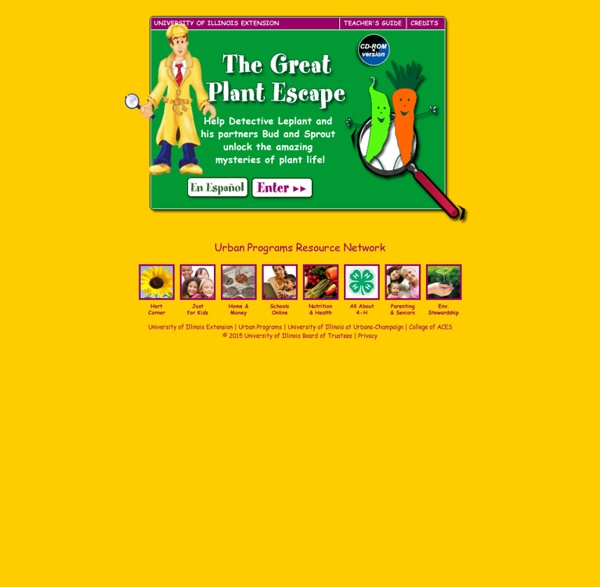Zoom
Trash
Related:



Plant Anatomy Advertisement. EnchantedLearning.com is a user-supported site. As a bonus, site members have access to a banner-ad-free version of the site, with print-friendly pages.Click here to learn more. (Already a member? Click here.) A plant is a member of the kingdom Plantae, a living organism that utilizes photosynthesis, a process in which energy from sunlight is converted to chemical energy (food). Structure and Function: Roots anchor the plant in the ground and absorb water and mineral nutrients from the ground. The following is a diagram of the external anatomy of a typical flowering plant: Phyla: The phyla in the kingdom Plantae include: Ginkgophyta, Lycophyta (lower ferns like club mosses), Pterophyta (ferns), Psilophyta (whisk ferns), Anthophyta (flowering plants), Gnetophyta, Sphenophyta, Coniferophyta (conifers), Cycadophyta (cycads), Sphenophyta, and Bryophyta (mosses, liverworts, hornworts).
Bill Nye's ClimateLab Game Zone KS2 Science Finding out how you move and grow. Can you label the human skeleton? When you've finished move onto the animal skeletons. Do you know which groups living things belong to? Look at the plants and animals as they go past. Can you drag them into the correct groups? Magnets have north poles and south poles. What does a year look like in space? © v2vtraining.co.uk The application consists of two sorting activities and one writing frame to support work towards the end of the unit. Solid, liquid and gas are called the three states of matter. Materials have different properties that make them useful for different jobs. Pupils can research information about teeth types, tooth structure and tooth decay. Use an information panel where pupils can research details about food groups and a balanced plate approach to a healthy diet.Balanced Plate lesson outline An information panel to explains the terms used in, and concepts behind, food chains.
Butterfly Fun Facts - Educational information about butterflies and moths KS1 Science © 3913.co.uk The clues are the names of the adult animals, the correct answers are the name of their young. © v2vtraining.co.uk A three part sorting activity based around animals. This is a quiz to support the understanding of adult and young animals. 15 multiple choice questions with built in answer checking. A three part activity to help with understanding the differences between young and adult animals. The materials sorting and labelling application is a simple to use science vocabulary exercise. A sound identification activity with sorting of musical instruments by how the sound is made. Watch the water cycle in action and add your own labels. Label words are simply dragged and dropped into the correct place in the diagram. Label words are simply dragged and dropped into the correct place in the picture. The plant parts labelling application is a simple to use science vocabulary exercise. Choose a map and add labels to make your own forecast.
Periodic Table of the Elements by WebElements Periodic Table Displays We are very pleased to announce the availability of a new line of periodic table displays which we are producing in partnership with Theodore Gray in the USA. These large installations are intended for public access in museums, science centers and other locations where the elements are a subject of interest. The first of these displays was recently installed at DePauw University in Indiana (see story on the right). Scroll down to explore each element in the display. Three things make these displays more than just a collection of elements. Secondly, we have designed the installation to be interactive with built-in touch sensors. The third significant feature of these large displays is quite simply that they are beautiful objects in their own right.
Howtoons